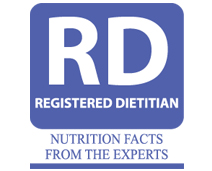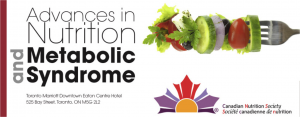
Our top 10 food and nutrition trends signal big changes for the year ahead and include a renewed focus on quality and enjoyment of food, sustainability, clean eating and influential new regulations. Read on for more of our expert advice on trends that will impact consumer food choices. Let us know what you think…
1. Clean Eating
Consumers demand to know exactly what is in their food and where it comes from so they can make informed choices that are in line with their values. For mindful decisions, the ingredient list, the food source and recipe composition are all becoming more significant factors.
2. Kids & Youth
Health Canada identified promoting the importance of healthy eating in children and youth a priority. Look for more resources, reports and dietary guidance to help establish healthy eating habits at an early age.
3. Enjoy food in the company of others
Food is a powerful way to connect with people which has benefits well beyond nutrition. We’ll see focus on bringing back the pleasure of everyday shared meals, cooking and conversation.
4. Sustainability
Taking care of the planet is a priority with a strong millennial focus. Look for ways to eliminate food waste, use up less than perfect looking fruit/veg, eat food before it spoils, package in compostable or biodegradable materials.
5. Protein Power
Protein continues to be a nutrient of great interest at every meal occasion, especially breakfast. Expect increased attention to plant based protein sources in healthy recipes such as tofu, nuts, seeds, pulses (dried beans, peas, lentils and chickpeas).
6. Food Security
Let’s recognize the importance of equitable access to affordable, wholesome, healthy foods and drinks for all Canadians. Supporting best health through good nutrition for everyone is driving a variety of new efforts.
7. Veggie Believers
Growth of vegetarian, vegan and other plant-focused foods are fueled by consumers looking for ways to boost their veggie intake at home and while eating out. Find more ways to make half your plate veggies.
8. Digestive Health – Feed Your Fiber Famished Gut!
Keeping your gut healthy involves eating probiotics that feed the friendly bacteria that live in your intestine. Canadians get less than half of the daily recommended amount of fibre, so look for more tips on boosting fibre intake, specifically probiotic type fibres for digestive health. More information is available on probiotic fibres at http://bit.ly/2jPasvW
9. New Food Labels and Claims
Health Canada through a commitment to transparency and ongoing regulatory modernization is revamping the packaged food label and Canada’s Food Guide. Calories, sugars, fat are focus on packaged foods and calories are required on restaurant chain menus. Check CFIA guidelines for any statements that may be made about the nutritional value of foods or menu items to help you avoid any violations.
10. Dietitians are Most Trusted Experts in Food & Nutrition
Many Canadians get their food and nutrition information from the ‘Wild Wild Web” of the internet which has so much misinformation. Instead, look to dietitians, the most trusted experts in food and nutrition. We do the hard work of studying the evidence, reviewing the research and translating the science to credible recommendations that you can use.
Let’s start a conversation! Join us on April 26th 2017 at our 10th annual Nutrition for NON-Nutritionists Course




 Restaurants Canada’s 8th annual Canadian Chefs’ survey tells what’s trending now and what the up and comers are as well. Of the 20 chef trends mentioned in the research, here are our TOP 7 favourites with insights from our food forward health conscious perspective.
Restaurants Canada’s 8th annual Canadian Chefs’ survey tells what’s trending now and what the up and comers are as well. Of the 20 chef trends mentioned in the research, here are our TOP 7 favourites with insights from our food forward health conscious perspective.



 Canadians are snacking more than ever and their snacking habits will continue to rise in the foreseeable future. According to a recent report by US based Hartman group, 56% of people snacked three or more times a day. This is a significant increase from the 1990’s when only 20% cent of people said they snacked frequently.
Canadians are snacking more than ever and their snacking habits will continue to rise in the foreseeable future. According to a recent report by US based Hartman group, 56% of people snacked three or more times a day. This is a significant increase from the 1990’s when only 20% cent of people said they snacked frequently.